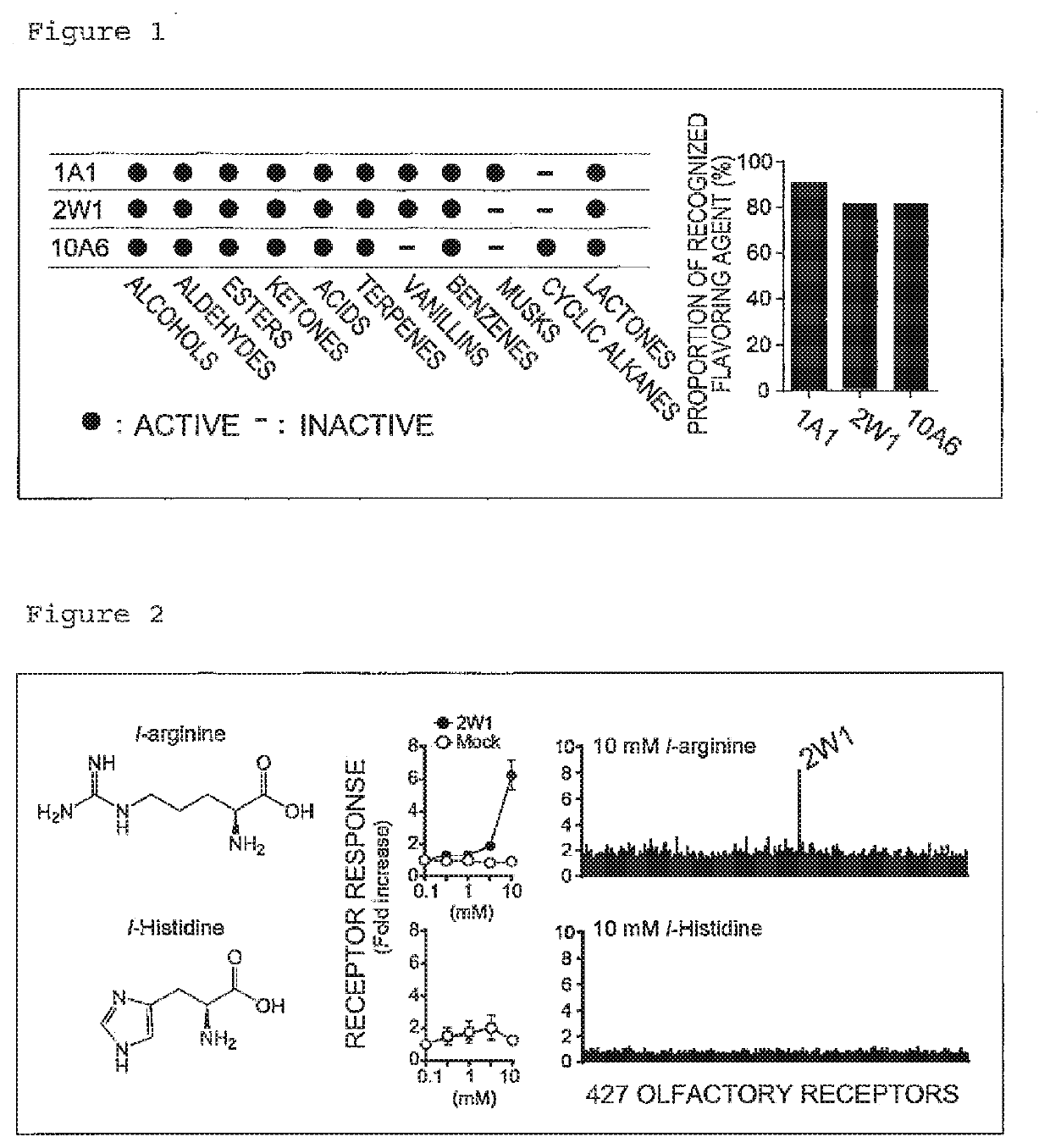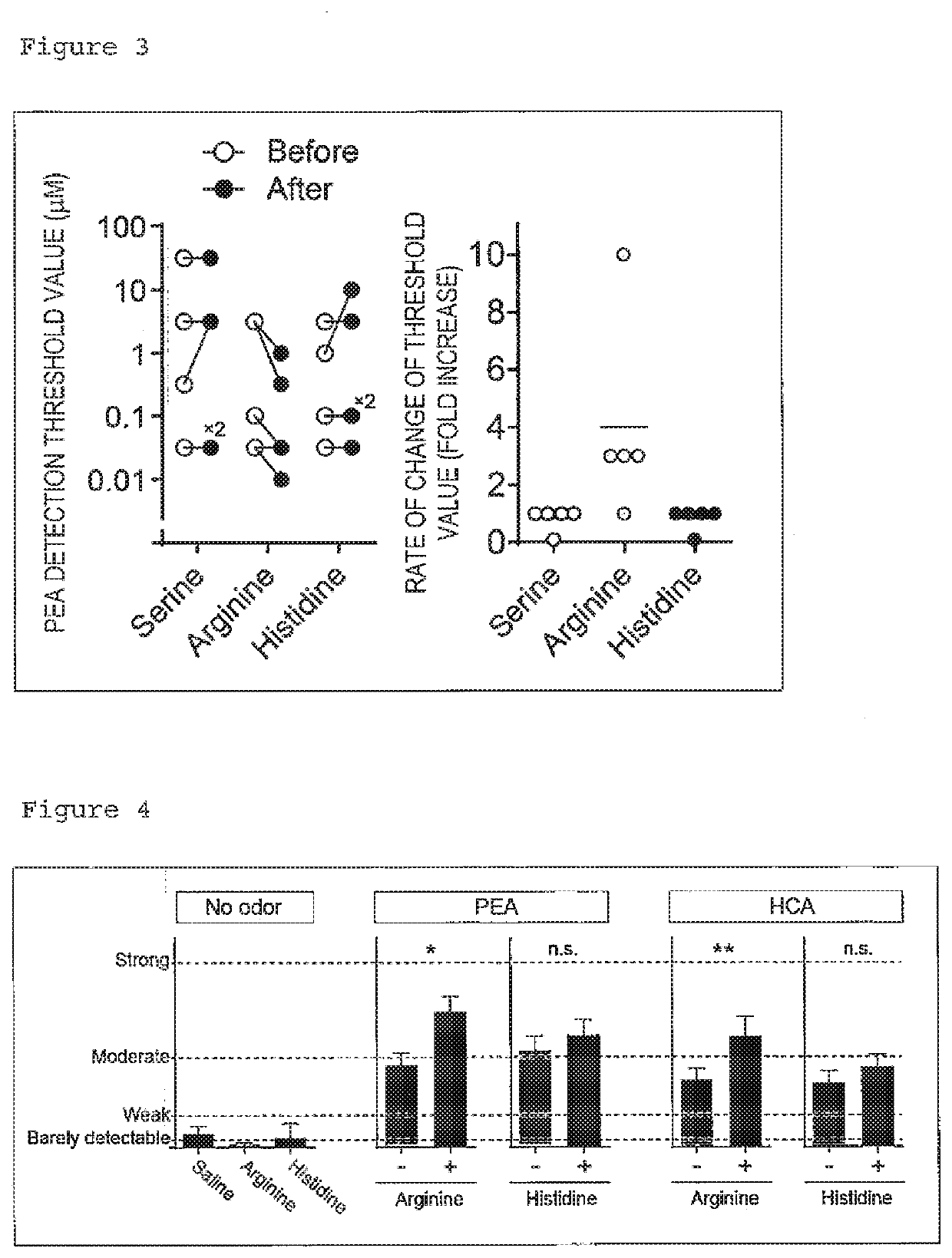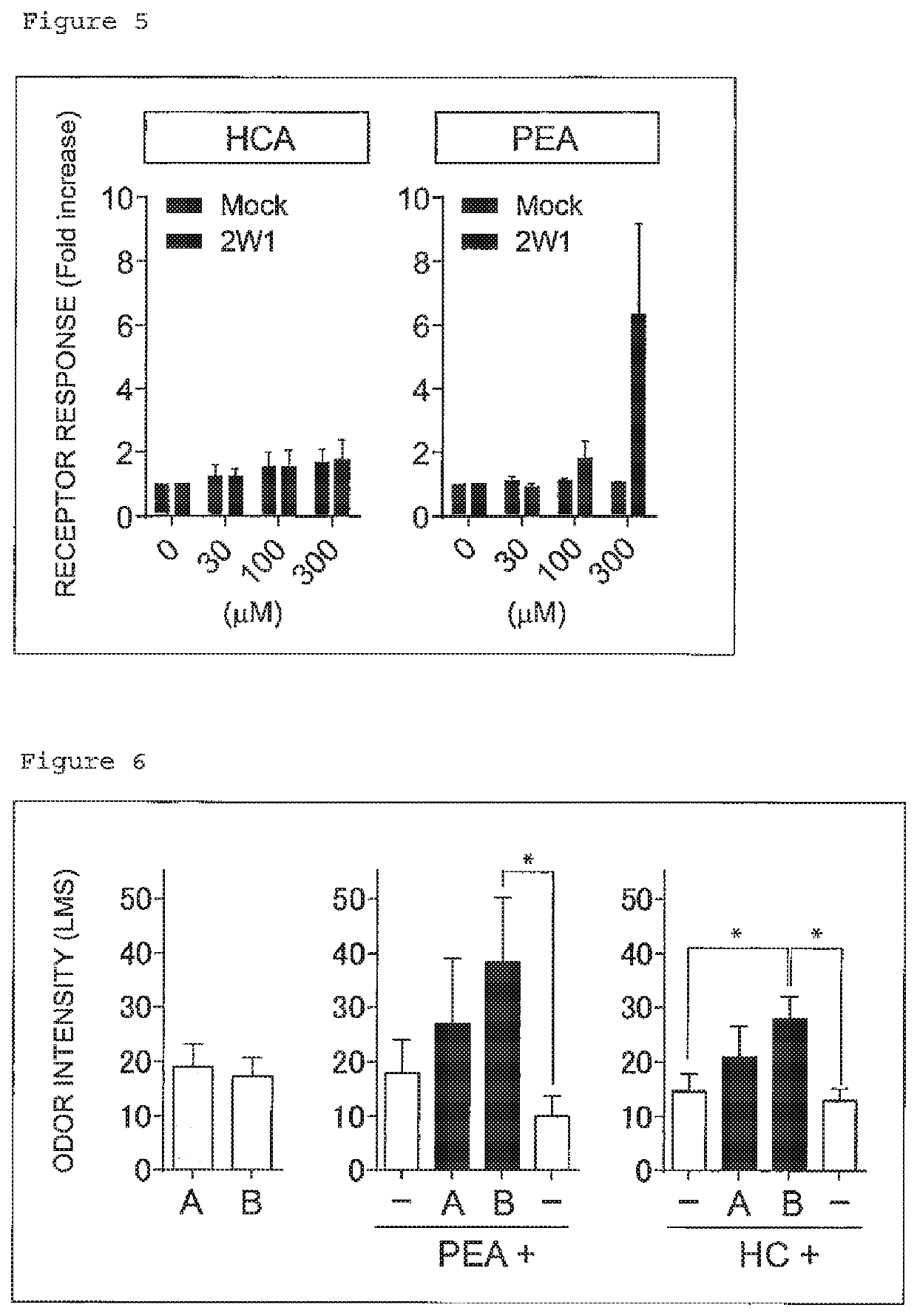Method for selecting odor control substance
- Summary
- Abstract
- Description
- Claims
- Application Information
AI Technical Summary
Benefits of technology
Problems solved by technology
Method used
Image
Examples
example 1
Evaluation of Ligand Selectivity of Human Olfactory Receptor
[0144]Response selectivity of olfactory receptors to various odorants with different structural classes was investigated. In this Example, 33 compounds selected from 11 groups (alcohols, aldehydes, esters, ketones, acids, terpenes, vanillins, benzenes, musks, cyclic alkanes, and lactones, each group including three or more odorants) based on similarity in the chemical structures were used as odorants.
[0145]DMEM solutions (Nacalai tesque, INC.) of each odorant were prepared at concentration (30 to 3000 μM) as high as possible taking the solubility and cytotoxicity of the odorant into accounts. The medium was removed from the culture of cells expressing an olfactory receptor prepared according to Reference Example 2) to 4), 30 μL of the odorant solution was added to each well, and luciferase assay was performed by the same procedure as in Reference Example 5). The cells were cultured for from 2.5 to 4 hours in a CO2 incubator...
example 2
Broadly Tuned Olfactory Receptor Selective Ligand
[0147]L-Arginine and 1-histidine were used as test substances. These test substances were each dissolved in Ringer's solution (140 mM NaCl, 5 mM KCl, 1 mM MgCl2, 2 mM CaCl2, 10 mM HEPES, 5 mM glucose, pH 7,4 (NaOH)) to prepare test substance solutions OR2W1 expressing cells were subjected to luciferase assay using the test substance solutions according to the procedure in Reference Example 2) to 5). The results are shown in FIG. 2. OR2W1 responded to 1-arginine concentration dependently (FIG. 2, upper middle). In contrast, OR2W1 expressing cells did not respond to 1-histidine (FIG. 2, bottom middle).
[0148]Furthermore, the responses of 427 olfactory receptors to 1-arginine and 1-histidine (10 mM) were investigated according to Reference Example 2) to 5). The results demonstrated that no olfactory receptors other than OR2W1 responded to 1-arginine (FIG. 2, upper right). All the investigated olfactory receptors did not respond to 1-histi...
example 3 influence
on Olfaction by Nasal Administration of 1-arginine
1) Effect of Odor on Detection Threshold Value (Detection Sensitivity)
[0149]The action of 1-arginine, which is an OR2W1 selective ligand, on olfaction was evaluated by sensory examination. Three samples, saline (Otsuka Pharmaceutical Co., Ltd.), saline aqueous solution containing 10 mM 1-arginine, and saline aqueous solution containing 10 mM 1-histidine, were prepared and filled into nasal sprays (KT110-102, AS ONE Corporation). As an odorant, phenylethyl alcohol (PEA), which is widely used in sensory examination as a substance and does not activate the trigeminal nerve system and gives a rose odor, was selected. PEA aqueous solutions with 11 different concentrations from 0.001 to 100 WA were prepared as test solutions, and 3 mL of each of the solutions was respectively added to 20-mL glass vials (Maruemu Corporation).
[0150]The experiment was blinded to both an examiner and an examinee. The examiner set the spray spout in the nasal c...
PUM
| Property | Measurement | Unit |
|---|---|---|
| Fraction | aaaaa | aaaaa |
| Fraction | aaaaa | aaaaa |
| Fraction | aaaaa | aaaaa |
Abstract
Description
Claims
Application Information
 Login to View More
Login to View More - R&D
- Intellectual Property
- Life Sciences
- Materials
- Tech Scout
- Unparalleled Data Quality
- Higher Quality Content
- 60% Fewer Hallucinations
Browse by: Latest US Patents, China's latest patents, Technical Efficacy Thesaurus, Application Domain, Technology Topic, Popular Technical Reports.
© 2025 PatSnap. All rights reserved.Legal|Privacy policy|Modern Slavery Act Transparency Statement|Sitemap|About US| Contact US: help@patsnap.com



